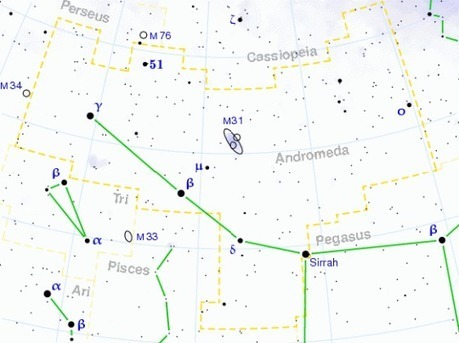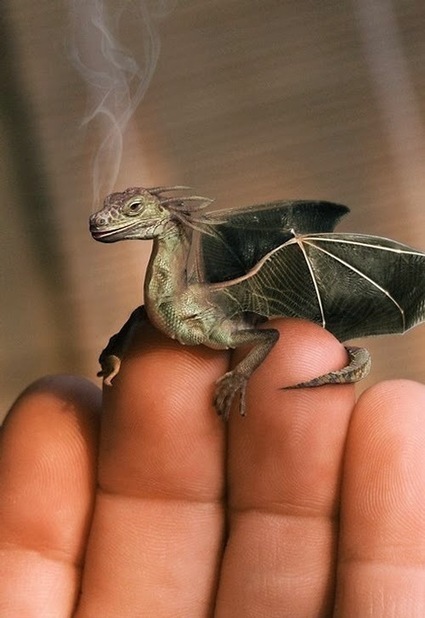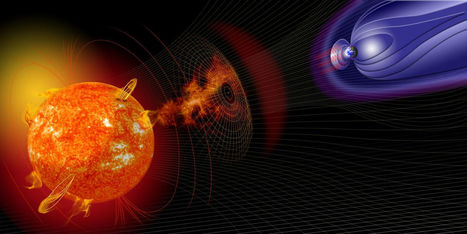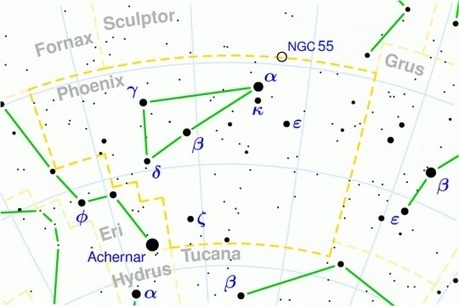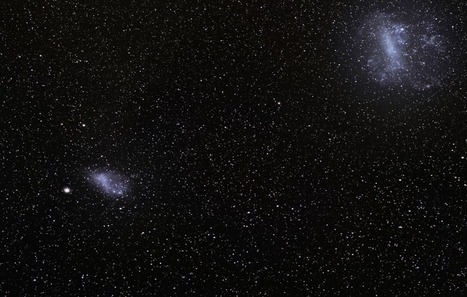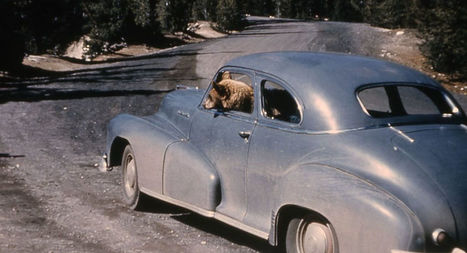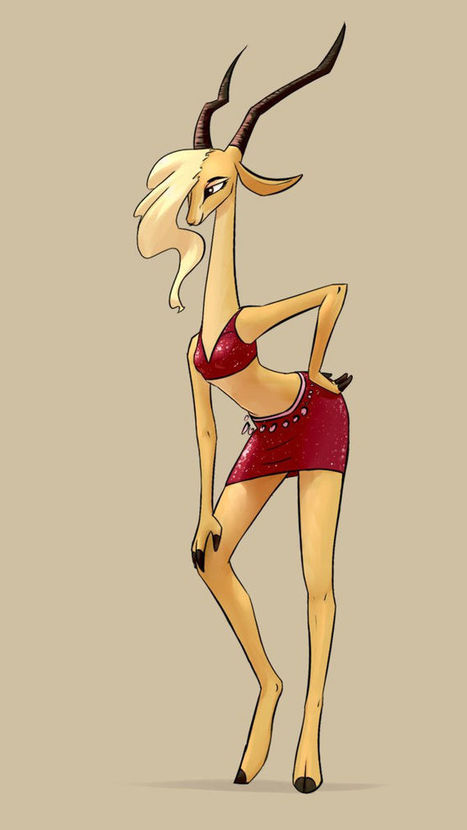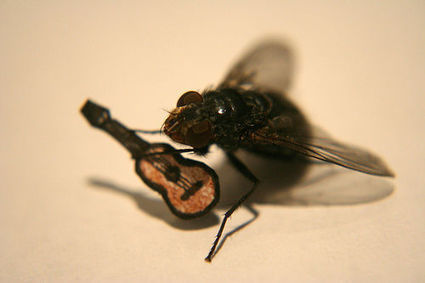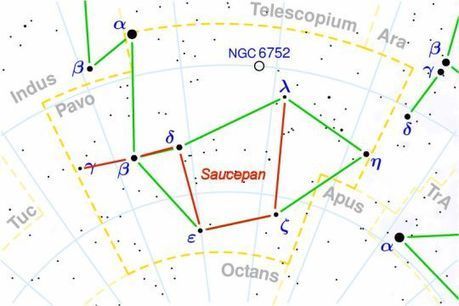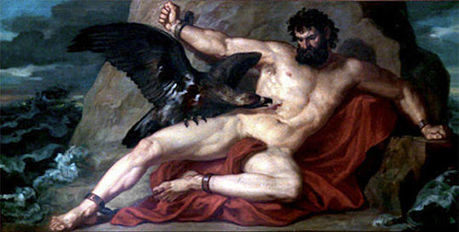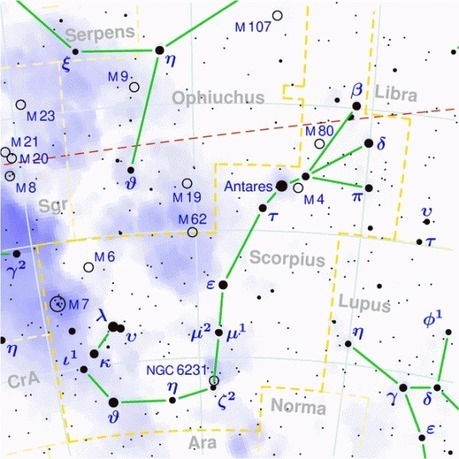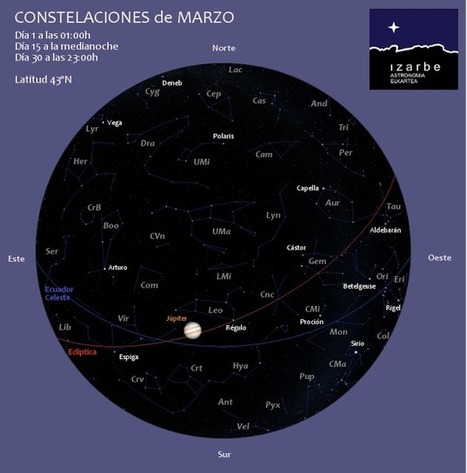 Your new post is loading...
 Your new post is loading...
The constellation of Andromeda represents a princess. One day her mother Cassiopeia decided that to save the town she would have to feed the lovely princess to Cetus, a hideous squiddly sea creatur…
The constellation Apus represents a Bird of Paradise. It gets its formal name from the Greek word “apous” which means “footless.” That’s pretty weird. The backstory be…
Camelopardalis is a very northerly constellation which represents a giraffe. I know it sounds like it should be a camel. If it helps, just imagine a camel where you pushed down on the hump and it m…
Delphinus is a small summer constellation which represents a dolphin. It’s one on Ptolemy’s maps which means it goes way back. It looks like a kite. At some point in history a few brigh…
Draco the dragon is a long, thin, dim, winding constellation that separates the two dippers. His neck curls back as though he is glancing behind, and his head is being stepped on by Hercules. Accor…
The constellation Grus represents a crane. Please note that we mean the large gangling-legged fish-eating bird, not the big load-lifting construction machine.
We’re basically talking three stars here so you can sketch just about anything with a bit of imagination. The brightest stars are named after parts of a fish because the area was carved from what was once part of Piscis Austrinus.
There is a star in Lacerta named EV Lacertae which is a flare star. Flares from our own sun erupt occasionally, sending huge plumes of hot hydrogen out into space, sometimes clobbering Earth in the process. Because the various parts of the sun don’t all spin at the same rate, the magnetism gets tangled up like a mistreated Slinky spring. Eventually the spring energy fights back and tries its best to uncoil. You want to be standing way back when that happens.
The constellation Lynx is one of a few that is its own translation. It means “lynx” so no fancy steps are required to explain it. In the late 1600’s Johannes Hevelius named it aft…
After the Big Dipper, Orion is easily the most known and the most pointed out constellation by the people who recognize at least some of them. There is the obvious belt, although Orion lived BP (Before Pants) so he wears a short skirt, or kilt or such, and below that hangs his big, um sword. Maybe it’s just a dagger, or possibly it’s a sword, not that it matters.
Most constellations are a Latin word that translates to some generic thing. But a few are their own translation such as a specific person’s name. The Phoenix is a unique mythical bird that is pretty much only known as Phoenix, the bird that’s hard to get rid of. As we all learned in mythology class, or from Harry Potter, when the bird dies it burns in a flash to ash, and then the ash turns back into the bird and it starts all over squawking and flapping and pooping on a newspaper.
The constellation known as Sagittarius is a centaur. Do not confuse it with Centaurus. We have two centaurs in the sky and this one wants to be associated with the fine sport of archery. So ignore the legs and focus on the bow.
The southern constellation of Tucana was named after a colorful South American bird in the late sixteenth century by Petrus Plancius. It is small but important. It contains some of our best examples of cosmic real estate, a dwarf galaxy and a globular cluster, both orbiting the Milky Way.
Los largos anocheceres de Enero con sus tempranas puestas de Sol, nos permiten ver numerosas constelaciones en la eclíptica; todavía, y desde el final del crepúsculo distinguimos las tenues estrellas de las constelaciones otoñales, las de ACUARIO, ocultándose por el SO, y las evasivas de PISCIS, a media altura y alargándose hacia el cuadrado de PEGASO. Al final del crepúsculo vemos culminar a Hamal, (Alpha Ari) la estrella principal de la pequeña constelación de ARIES, que pasa desapercibida a la derecha de la más llamativa Aldebarán (Alpha Tau) una gigante roja y estrella principal de TAURO, que también podemos ver culminando a gran altura antes de medianoche. También podemos llegar a ver emergiendo por el horizonte oriental a las de primavera, CÁNCER, LEO, y alrededor de la medianoche, los brazos de la doncella VIRGO.
|
The constellation Antlia represents an air pump. The name just means pump, but it was originally Antlia Pneumatica. Back in the 1700’s Nick Lacaille named several constellations after inventi…
The constellation Boötes is usually called the herdsman but sometimes he is the plowman. Herding or plowing, free range cowboy or dirt farmer. It reminds me of the old Cain and Able conflict that d…
Crater is one of the constellations passed down from the ancients to us via Ptolemy. Its brightest star Labrum, “the lip” (of the cup) is rather dim. The allegorical drawing is usually …
Draco the dragon is a long, thin, dim, winding constellation that separates the two dippers. His neck curls back as though he is glancing behind, and his head is being stepped on by Hercules.
According to the Romans, Draco was killed and placed in the sky by their goddess, Minerva. To the Greeks Draco was killed by their hero, Hercules. Kill a dragon and you’re a member of the family. Fail and suddenly you were always an orphan.
Eridanus is a long narrow constellation winding like a river from Orion’s kneecap to points farther south. It is probably named after Eridu, an ancient city in old Babylonia. Over the ages various cultures have given it various names and backstories, almost all of them river-ish.
At the southern end of Eridanus the bright blue star Achernar marks the end of the river. The name means “End of the River.” It’s one of the brightest stars in the whole sky and it’s also one of the hottest.
Hercules is a major constellation and its story goes all the way back to when the ancient Greeks did a major reboot of Gilgamesh. Ptolemy included Hercules in his collection a couple thousand years…
There is a constellation called Leo Minor that represents a lesser lion, just north of regular Leo. Johannes Hevelius added it in 1687. He sort of squeezed it in between Leo and the Big Dipper where there was a bit of unoccupied interstitial space. It’s like how Idaho was formed from the leftover region created by forming the surrounding states. And like Idaho, the tourist attractions are cheaper and less crowded.
The southern constellation of Musca represents a lowly fly. When Johann Bayer added it to his maps he called it “The Bee” and folks liked that name for a couple of hundred years. But then some map maker called it The Fly except there was already a fly up north which was part of Aries the Ram. I’ll just let astrologers chew on that fact for a bit. During those days folks called Musca the southern fly to distinguish it from the northern fly but eventually the northern one went away completely and Aries became a no-fly zone.
There is a constellation way down in the southern part of the sky named Pavo which means Peacock, and its brightest star is named Peacock. Coincidence? Are there really any coincidences? Twenty four hours in a day, twenty four beers in a case. Okay that one maybe. Although those pesky Romans and the Egyptians both had a weird fascination with twelves, and twenty fours, and triangles, and toga parties, etc. So who knows? We probably have so many 12’s in our culture because of those guys.
Sagitta is a tiny constellation whose dots actually connect to make an arrow, complete with fletching feathers. It’s one of the older names for a group of stars but then the bow and arrow as a weapon goes way back, probably invented more than 60000 years ago. So the constellation must have been named sometime after that. Ptolemy included it on his maps 2000 years ago.
The summer sky is dominated by a constellation named Scorpius, the scorpion. It has lots of bright stars in a long swooping curved shape like a fish hook. The brightest star in the line-up is a huge red one smack dab in the heart of the beast, named Antares. The scorpion is formidable. He’s hard to miss.
Click here to edit the content
|

 Your new post is loading...
Your new post is loading...
 Your new post is loading...
Your new post is loading...



